

 aints, pencils, paper, crayons, and clay have been staples of childhood for centuries. But as the toy industry exploded in the years after World War II—thanks to a suddenly enormous and voraciously consuming population of children—toy makers turned their attention to creating new ways for kids to unleash their inner artists—while also updating the classics.
aints, pencils, paper, crayons, and clay have been staples of childhood for centuries. But as the toy industry exploded in the years after World War II—thanks to a suddenly enormous and voraciously consuming population of children—toy makers turned their attention to creating new ways for kids to unleash their inner artists—while also updating the classics.
People who were kids in the 1950s will remember their delight when Crayola added lots more colors, but that was just the beginning. New materials that had been developed for the war effort found peacetime applications in toys such as Play-Doh, Colorforms, and Etch A Sketch. Who knew that an idea that started as wallpaper cleaner would become a timeless classic when repurposed for kid use?
The Vac-U-Form, Creepy Crawlers, Shrinky Dinks, and other toys allowed kids to utilize their creative abilities using things that would previously have been off limits—such as electricity, heat, and molding plastic. And the 1962 introduction of the felt-tip marker would forever change the way kids drew.
At the same time, the space race and the culturewide focus on science and engineering inspired innovation in “do-it-at-home” art such as the Spirograph. The growing emphasis on self-expression and the individual that began to take hold in the 1960s also had a big impact on this category. The magic of every arts and crafts toy was—and still is—that it puts the kid’s imagination at the center of the experience.
And part of the fun was wowing your parents with the results. How many moms, for instance, feigned rapture over a colored-in life-size DoodleArt poster, a glowing neon Lite-Brite display, or a (usually inedible) brownie conceived in an Easy-Bake Oven?
In a testament to their impact on our memories and our culture, many of these toys are still around today. Even in our technology-driven era of computers and iPads, kids still love arts and crafts projects and the thrill of making something with their own hands. For all their simple fun, these are modes of self-expression that you’ll never find in a computer chip. They are powered by that one truly unique energy force—a child’s imagination.
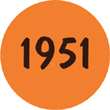
![]() n 1951, two art students named Harry and Patricia Kislevitz were introduced to a lightweight and flexible type of vinyl that a friend was using to manufacture pocketbooks. Once they discovered that this new type of vinyl stuck to the semigloss paint in their bathroom, they began cutting out shapes and decorating with them, even encouraging visitors to add their own cutout creations to the wall.
n 1951, two art students named Harry and Patricia Kislevitz were introduced to a lightweight and flexible type of vinyl that a friend was using to manufacture pocketbooks. Once they discovered that this new type of vinyl stuck to the semigloss paint in their bathroom, they began cutting out shapes and decorating with them, even encouraging visitors to add their own cutout creations to the wall.
Seeing how much their dinner guests enjoyed their home-spun art project, Harry and Patricia decided to try to launch it as a product, and created Colorforms: sets that included basic shapes, letters, and numbers—made of that same vinyl—which could be stuck to a special piece of cardboard finished with a shiny plastic surface. First picked up by the high-end toy retailer FAO Schwarz, the product was sold primarily as an educational toy and was an immediate hit.
The appeal of Colorforms was that they allowed any kid to become an artist. No glue or even scissors were required; the shapes stuck like magic to the board and to each other and could be peeled off just as easily to be reused over and over. Colorforms were among the first toys to be advertised on television, which certainly helped spur demand.
In 1962, Colorforms introduced a doll called Miss Weather, whom kids could dress up, using their Colorforms, in rain slickers, ski jackets, and so on. Thanks to appearances on Captain Kangaroo, she became a top seller and helped drive the popularity of the brand.
Given the success of Miss Weather, it wasn’t long before Colorforms began creating tie-ins to popular cartoon characters and favorite stories. Over the years, Shari Lewis, Mickey Mouse, Sesame Street, Batman, The Smurfs, and even The Dukes of Hazzard and The Addams Family inspired sets. If a show was a hit in the late 1960s and early ’70s, chances are it had a Colorforms set to go along with it. And why not? They were inexpensive to produce and to purchase and a fun creative outlet for kids.
The original Colorforms remain such a wonderful example of mid-twentieth-century design, they were considered for the permanent collection at the Museum of Modern Art. Reproductions of the original set are still being produced by University Games, as well as newer versions with favorite characters for today’s kids. And, yes, there’s a collector’s market. If you have a few hundred dollars to spare, you might be able to pick up an Addams Family set in mint condition.
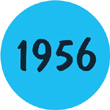
 o baby boomers—and every generation since—there’s one smell that never fails to bring back happy memories: that of fresh Play-Doh.
o baby boomers—and every generation since—there’s one smell that never fails to bring back happy memories: that of fresh Play-Doh.
There are various stories about how Play-Doh was created, but all agree that it wasn’t originally intended to be a toy at all, and by most accounts, it had something to do with wallpaper. As the story goes, Noah McVicker and his nephew Joe apparently were looking for a compound that could be used to clean wallpaper and only later realized their invention could be molded and played with. That’s one story. Another claims Joe McVicker created the stuff out of wallpaper paste for the kids in his sister’s preschool class.
However it happened, Play-Doh was an instant hit with kids, and the McVickers were quick to bring the product to market by forming the Rainbow Crafts Company. Play-Doh was originally sold in four colors—the three primary colors, plus white—first to department stores and schools in Cincinnati. Parents and teachers loved it because it was much less messy than real clay or oil-based modeling compounds. Plus, it was reusable when stored in its airtight container.
Local toy maker Kenner soon acquired the product from Rainbow Crafts, and in 1960, Kenner introduced the Fun Factory, a set of molds and tools that allowed kids to roll and extrude different shapes and build other types of creations.
When Hasbro acquired Kenner, the company continued to add new colors and kits to inspire model artists.
Today, Play-Doh is as popular as ever, and you’d be hard-pressed to find a kid, or adult for that matter, whose eyes don’t light up at the sight of that bright yellow canister. In 2013, Hasbro updated the formula for the first time ever, introducing a lighter, more flexible compound.
And that smell can still trigger happy memories in legions of adults, and will surely grace the noses of many generations to come.

 rayola makers Binney and Smith estimate that by age six, the average child in the United States will have gone through more than seven hundred crayons. That’s a lot of coloring, and crayons remain one of the staples of imagination and childhood.
rayola makers Binney and Smith estimate that by age six, the average child in the United States will have gone through more than seven hundred crayons. That’s a lot of coloring, and crayons remain one of the staples of imagination and childhood.
Edwin Binney and C. Harold Smith founded a pigment company in 1880. In 1900, the company introduced black wax marking pencils, and a few years later it changed schoolrooms forever in 1902 when it introduced dustless chalk. (This would prove so innovative and popular that it would win a gold medal at the St. Louis World Exposition in 1904.)
Before they would win that accolade, however, they were still trying to come up with useful items for classrooms. In working with teachers, they discovered a need for better wax crayons and more colors. So they adapted their successful wax pencils, added different pigments, and in 1903 produced the first box of eight crayons. It sold for five cents.
It was Binney’s wife, Alice, who had the final bit of inspiration and came up with the name. She took the French word for chalk, craie, and combined it with “oleaginous,” a now obscure word meaning oily, and came up with Crayola—literally “oily chalk.”
Crayola crayons were an instant hit. Over the years the company added more and more colors in bigger and bigger boxes, introducing the forty-eight-count crayon box (an unheard of number of crayons!) in 1949. But the biggest excitement, at least for the boomer generation, was yet to come. In 1958, Crayola manufactured the sixty-four-count box of crayons, and it became a sensation when it was introduced with much fanfare on Captain Kangaroo.
With this many colors, kids could be serious artists, and the new colors introduced for this box reflected an artist’s palette, including Sepia, Raw Umber, and Raw Sienna, as well as the start of more trendy, fashionable colors like Plum, Lavender, and Copper. (Adding trendy colors—and retiring others—has become a standard practice for Crayola in 2013.) But what made the 64 Box really special was the built-in crayon sharpener on the back. This was the thing to have, and the Box became one of the bestselling toys of the year.
Crayola would continue to introduce even bigger boxes of Crayons with more crayons, but none has ever been as popular as that sixty-four-crayon box.
Crayola crayons are still a top choice of moms—and coloring with them is among the most beloved memories of adults. In fact, a 2008 Yale University study ranked Crayola crayons as number eighteen on the list of the twenty most recognizable scents to American adults.

 n December 24, 1960, it was a race against the clock for the Ohio Art Company, as they strove to keep their assembly line running to keep up with the phenomenal demand for its hit product—the Etch A Sketch.
n December 24, 1960, it was a race against the clock for the Ohio Art Company, as they strove to keep their assembly line running to keep up with the phenomenal demand for its hit product—the Etch A Sketch.
Developed in France by Arthur Granjean in the late 1950s, it was originally known as L’Écran Magique (the Magic Screen), until Ohio Art brought it to the United States, gave it a new name, and turned it into an instant sensation.
In the decades since, millions have been sold in more than seventy countries worldwide. Incredibly, the basic design of the toy hasn’t changed in all that time—it’s a screen in a signature red frame with two knobs that control the vertical and horizontal movement of an internal stylus.
But for all the millions of children who have whiled away countless hours unleashing their inner artists on their Etch A Sketch, how many actually know how the thing works? Well, the knobs control a network of strings that guide the stylus, and as it moves, it draws—or rather “etches”—into the thin film of aluminum covering the underside of the screen. When you’re done, simply give the thing a shake, the aluminum powder fills in the lines, and you’re ready to go again.
In 2012, the Etch A Sketch earned unintended notoriety when presidential candidate Mitt Romney’s aide Eric Fehrnstrom suggested that after the primaries, Romney’s campaign could be like an Etch A Sketch. “You can kind of shake it up, and we start it all over again.” Needless to say, that didn’t do much for Romney’s polling numbers, but it was great for Ohio Art’s sales; they saw a huge boom in sales that week, and even came out with versions in red and blue to capitalize on the unexpected publicity.
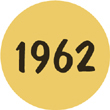
 he Vac-U-Form is a DIY toy that was in many ways ahead of its time. Highly sophisticated for 1962, the Vac-U-Form was a contraption that let kids design, assemble, and play with their own plastic toys. It was like having a factory in your own home, and at the time that was amazing to kids and the culture at large.
he Vac-U-Form is a DIY toy that was in many ways ahead of its time. Highly sophisticated for 1962, the Vac-U-Form was a contraption that let kids design, assemble, and play with their own plastic toys. It was like having a factory in your own home, and at the time that was amazing to kids and the culture at large.
The red and silver unit had an open heating unit, a frame to hold plastic sheets, and a platform on which to place molds. To make a toy, you put a mold on the platform, put the plastic sheet in the frame, and allowed it to get soft over the heating plate. When the plastic was just the right consistency, you flipped the frame over the mold and pumped the handle on the side. The pumping created suction (hence the name “Vac-U-Form”) that pulled the softened plastic around the mold (like shrink-wrap), forming half a toy. Then you’d repeat the process to create the other half of the toy.
When the plastic had hardened, you trimmed away the excess plastic, glued the two halves together, and voilà—you had your own homemade toy. The Vac-U-Form came with a variety of molds, but as many inventive kids discovered, virtually anything small enough to fit in the unit and with a flat side that could rest on the platform could be molded. Mattel’s original instruction booklet even included ideas for making your own molds from clay.
Naturally, things didn’t work out perfectly every time. If the plastic wasn’t soft enough, it wouldn’t suction to the mold. If you left the plastic too long over the heating element, it would melt completely. But as long as you didn’t ruin the piece of plastic, you could snap it back in the frame and try again. This trial-and-error process was part of the fun. Kids who played with this toy remember the joy of finding new things to mold, the magic of watching toys take shape, and even the distinctive smell of the plastic as it heated.
Mattel ensured kids would never run out by selling refill kits—twenty-five pieces of plastic for $1.00—in all sorts of colors, including metallic gold and silver.
The Vac-U-Form was a big hit for a year, until it was overtaken by the launch of Creepy Crawlers, which held the same DIY appeal but added the irresistible gross-out factor. In the early 1990s, Toymax tried to reintroduce the toy as the Vac-U-Former, but it never worked as well as the original.
It’s inconceivable that a toy like the Vac-U-Form would be made today. It’s laughable just to think about anyone trying to sell a toy that that let kids shove lumps of plastic into an open heating unit.
Collectors still seek out the toy, but fears of fire—and litigation—have more or less sucked the Vac-U-Form into the vortex of time.
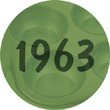
 ther than the Barbie doll, there is probably no more iconic girls’ toy of the 1960s than the Easy-Bake Oven. In fact, if you were a child of the late ’60s through the late ’80s you probably recall how all the girls you knew growing up automatically fell into one of two camps: those who had the Easy-Bake Oven and those who coveted it.
ther than the Barbie doll, there is probably no more iconic girls’ toy of the 1960s than the Easy-Bake Oven. In fact, if you were a child of the late ’60s through the late ’80s you probably recall how all the girls you knew growing up automatically fell into one of two camps: those who had the Easy-Bake Oven and those who coveted it.
Debuting in 1963, with a retail price of only $15.95, the aqua-colored oven let every girl be in charge of her very own kitchen. Using four-inch pans, teeny cake mix packets, water, and the all-important lightbulb, it allowed baby boomers to have their first independent baking experiences. Their parents remember the balance of dread and pride that came with sampling the results of the efforts. The first mixes tasted pretty awful, but culinary perfection wasn’t the point.
There was something about the Easy-Bake Oven that was just right for its time. Moms were poring over magazines full of easy recipes, and prepackaged foods and mixes were proliferating on store shelves. So it only made sense that girls who, at the time, foresaw a life of great food prepared with the utmost convenience, should want to mimic their moms with their very own kid-size appliance.
What worked for cakes would probably work for other types of foods, Kenner reasoned, so in 1966, the company introduced a bubble-gum-making set, but that wasn’t what kids wanted to do. It was always the cakes and brownies and other concoctions that girls most loved making; they wanted to replicate what happened in a grown-up kitchen, and plus, who could resist the homey smell of a cake rising over two 100-watt bulbs?
Cooking is such an elemental role-playing activity for kids, and the Easy-Bake Oven was the first toy that truly replicated that experience. It’s never been out of production, but, of course, as kitchen styles have changed, Easy-Bake has, too. It’s been made in avocado green, harvest gold, and white, as well as other colors. In fact, over the years, the Easy-Bake Oven has been restyled more than a dozen times, including one that looks like a contemporary range or a microwave.
The mixes got a lot better, too. On the oven’s thirtieth anniversary in 1993, when Hasbro (which had gotten the toy in the acquisition of Kenner), surveyed grown women who were then buying the toy for the kids in their lives, the top comment was that the mixes tasted so much better than they had back in their own childhoods. To the glee of parents nationwide, they no longer had to fake delight when presented with the baking results.
The Easy-Bake Oven is still being made in various modern models and styles today. And though their line of mixes has expanded widely to include soft and savory pretzels, s’mores, and red velvet cakes, the oven mechanism has remained largely the same.
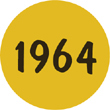
 ross has always appealed to kids. Whether the goal is to scare their sisters or prove their dominance on the playground, kids love keeping their cool while others are grossed out or scared. Few toys provide that opportunity as effectively as plastic bugs. Now imagine having a limitless supply of plastic bugs and creepy things that you could make yourself.
ross has always appealed to kids. Whether the goal is to scare their sisters or prove their dominance on the playground, kids love keeping their cool while others are grossed out or scared. Few toys provide that opportunity as effectively as plastic bugs. Now imagine having a limitless supply of plastic bugs and creepy things that you could make yourself.
That was the idea behind Mattel’s Creepy Crawlers set. Mattel knew from the success of its Vac-U-Form that making the toys could be as much—or more—fun than buying the toys, especially when those toys were squishy bugs—spiders, centipedes, and more. The Creepy Crawlers Thingmaker unit contained a hot plate, on which molds were placed to heat up. Plastigoop—a liquid plastic in any number of colors—was squeezed into the mold, and the toy was literally cooked. Once the bugs were baked, you attached a handle to the plate, and put it in a water bath to cool. As those who played with Creepy Crawlers might remember, the tricky part was getting the creations out of the mold; you had to peel them out or they would rip in two.
The toy was such a hit that soon Mattel was doing a big business selling individual bottles of Plastigoop, and over the next six years, Mattel would introduce all kinds of different mold sets—famously, Creeple People and Fright Factory. For girls, flowers and gem-shaped molds soon followed.
One of the most famous extensions of the line was Incredible Edibles in 1967. Instead of plastic, this used a compound creatively named Gobble Degoop, and when heated, it formed gummy candy.
Burned fingertips were an almost inevitable hazard of playing with this toy, as eager fingers couldn’t resist testing the consistency of the plastic while it was baking or trying to pull the finished product out of the mold too soon. (Remember, this was a now long-gone time when a mild burn indicated that the child hadn’t used the toy correctly, not that the toy itself was flawed.)
Parents also found that the Plastigoop stained, and the combination of that and the open heating plate made the toy understandably less attractive over time, as parents tired of bandaging burned fingers and scrubbing plastic goop off the furniture.
In the early 1990s, Toymax reintroduced the toy to a new generation, and it had a successful run for several years. The modern version resolved the safety issue, at least; the baking happened over a lightbulb and the molds cooked in a chamber that stayed closed until the plates were cool enough to be touched without risk.
Creepy Crawlers toys still exist, albeit in a more sanitized—and less fun—form. Rather than squirting goop into molds, kids use mechanisms to inject plastic into molds, never touching the plastic until the creation is finished. These gooey bugs will still scare or gross out your sister when strategically placed, however. It’s good to know some things don’t change.
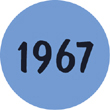
 ll toys reflect the broader culture of their times. If you were to choose a toy that was an almost perfect metaphor for 1967, it would have to be the Spirograph. The Spirograph was what happened when the space-race obsession with math and science collided headlong with the counterculture’s fascination with optical art and the psychedelic. This unlikely pairing produced the Spirograph, a wonder of engineering that let kids create all kinds of trippy designs.
ll toys reflect the broader culture of their times. If you were to choose a toy that was an almost perfect metaphor for 1967, it would have to be the Spirograph. The Spirograph was what happened when the space-race obsession with math and science collided headlong with the counterculture’s fascination with optical art and the psychedelic. This unlikely pairing produced the Spirograph, a wonder of engineering that let kids create all kinds of trippy designs.
The toy was a simple but well-engineered collection of twenty-two plastic gears, circles, and oblongs with holes in their centers and teeth around their edges. These pieces could be interlocked in various different configurations and placed into a corrugated board where they could be held in place with small pins. Then kids put a pen through one of the holes in one of the gears and spun it around, and—voilà—instant geometric art. The pieces were designed so that even the most untalented scribbler could create intricate, cool-looking designs.
While mechanical drawing tools had been around since the late nineteenth century, Spirograph was the first to be marketed as a toy, and the first to tap so perfectly into the spirit of the times.
There was also something irrepressibly mod about the drawings. Even the color palette was “liberated.” Kids were thrilled to find aqua, chartreuse, or even pink drawing tools on the shelves of once-boring stationery stores.
Spirograph stuck around for several years, but, as time marched on, toy spin-art kits, and later, computer design programs made the toy less and less relevant. Finally, as the heyday of optical art passed and the culture moved on, the Spirograph spiraled into obscurity.
Over the years, several companies have tried to introduce different versions of the Spirograph, but none captivated kids like the original. In 2012, Kahootz Toys reintroduced the toy with some changes, such as replacing the drawing pins with putty. Time will tell whether it draws new fans.
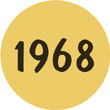
![]() t may be hard for contemporary kids to grasp what an amazing toy Lite-Brite was, but back in 1968, a toy that could plug in and light up, letting kids create their own glowing artwork, had a serious “wow” factor.
t may be hard for contemporary kids to grasp what an amazing toy Lite-Brite was, but back in 1968, a toy that could plug in and light up, letting kids create their own glowing artwork, had a serious “wow” factor.
And who could forget the jingle that got into your head like an earworm:
Lite-Brite, making things with light,
What a sight, making things with Lite-Brite.
In essence, the toy was a lightbulb in a box with holes in it. But as with all successful toys, imagination made it so much more. The set came with more than three hundred different colored pegs that could be plugged into the holes in the box to create pictures. Kids could place black construction paper pattern sheets over one side of the unit to peg by number, though plain sheets were included for those inspired to create freestyle. However, the real magic happened the moment kids switched it on, and their artwork lit up in a translucent glow.
Though the novelty and the technology were soon overtaken by new developments, from a kid’s perspective, Lite-Brite is still kind of magical, and it’s become a classic. It’s never been out of production. Over the years, many variations have been introduced, including a cube that let kids create on four sides. Not surprisingly, today’s Lite-Brite looks more like a tablet computer and is battery operated. Lite-Brite has even inspired an app that re-creates the look of the original, though on a tiny smartphone screen. Different times bring different play, but the magic of the original Lite-Brite—at least to its first fans—will never dim.
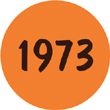
 aybe it was the popularity of optical art and psychedelic posters. Maybe it was the explosion in felt-tip pens, which were still relatively new and suddenly available in the neon colors popular at the time. Whatever the source of the inspiration, in 1972, Vancouver resident Glenn Anderson came up with the idea of selling coloring to adults—or semi-adults. He created poster-size black-and-white art that you could color in yourself, and sold it with felt-tip markers. He called it DoodleArt.
aybe it was the popularity of optical art and psychedelic posters. Maybe it was the explosion in felt-tip pens, which were still relatively new and suddenly available in the neon colors popular at the time. Whatever the source of the inspiration, in 1972, Vancouver resident Glenn Anderson came up with the idea of selling coloring to adults—or semi-adults. He created poster-size black-and-white art that you could color in yourself, and sold it with felt-tip markers. He called it DoodleArt.
The first poster was called “Ecology” and it was drawn by Len Masse. It was a true reflection of the artistic sensibility of its time with an ornate pattern of birds, flowers, and insects. Anderson packed it all in a tube and started selling it in record stores (where all the groovy adults were hanging out). The marketing slogan, also very appropriate to the times, was, “Do your own thing in color.” Evidently many were eager to do just that; Anderson sold more than a million “Ecology” posters. Taking nearly sixty hours to complete, it was certainly a way to tune in and zone out … with or without the kind of chemical enhancements popular at the time.
DoodleArt swept Canada, the United States, and the world, a kind of underground craze that legitimized coloring for older kids and adults. New posters were produced for about five years, and many a child of the hippie generation will recall hanging their own psychedelic creations next to the lava lamps and beaded curtains in their first “grown-up” apartment or house.
In 2011, DoodleArt changed owners, and a new era was born. Many of the original posters have been reintroduced, and coloring DoodleArt masterpieces is taking its place beside completing jigsaw puzzles as a pleasant—and once again popular—pastime.
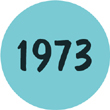
 he Shrinky Dinks story is one of those that inspire people to try to get into the toy business. As the tale goes, a suburban mom named Betty Morris was looking for an activity to do with her Boy Scout troop and came across an article in a crafts magazine that said you could make Christmas ornaments out of clear plastic coffee can lids; just decorate the lid and bake it over low heat and the plastic would magically shrink. She tried it, and it worked.
he Shrinky Dinks story is one of those that inspire people to try to get into the toy business. As the tale goes, a suburban mom named Betty Morris was looking for an activity to do with her Boy Scout troop and came across an article in a crafts magazine that said you could make Christmas ornaments out of clear plastic coffee can lids; just decorate the lid and bake it over low heat and the plastic would magically shrink. She tried it, and it worked.
While many people would simply be grateful that this experiment didn’t burn the house down, Betty and her friend Kathryn Bloomberg turned it into a huge business.
It was such a simple product that they were able to make it themselves, and the first season of sales put them—and their little town of Brookfield, Wisconsin—on the map.
Kids would draw on or color the sheets (through trial and error, Morris and Bloomberg managed to find a type of plastic sheeting that melted just like the coffee lids), place them in a conventional or toaster oven, and watch them shrink to a fraction of their original size while they also thickened and grew more durable. More fun still, with a windowed oven, kids could actually watch their pieces shrink. This bonus was a big part of what turned an otherwise basic arts and crafts project into a huge hit toy.
In 2001, Spin Master introduced an oven play set called the Incredible Shrinky Dinks Maker, and it was one of the hottest toys of the year—certainly a distinction not often given to an arts and crafts kit. Today, there are many different companies making shrinking plastic, but the original Shrinky Dinks are now made by Big Time toys.
The excitement, though, as any kid who played with them will remember, was that when their Shrinky Dinks creations were baked, it didn’t feel like arts and crafts; it felt like magic.
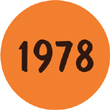
 he 1970s marked the beginning of the era of the fashion designer as celebrity: From Ralph Lauren to Calvin Klein to Yves Saint Laurent to Laura Ashley and many more, high-end designers suddenly were in the public eye just as often—if not more often—as their models.
he 1970s marked the beginning of the era of the fashion designer as celebrity: From Ralph Lauren to Calvin Klein to Yves Saint Laurent to Laura Ashley and many more, high-end designers suddenly were in the public eye just as often—if not more often—as their models.
So it’s no surprise that kids would want to pretend to be fashion designers. This is why, in 1978, the toy maker Tomy introduced Fashion Plates, a set of plastic plates with raised outlines of different fashion pieces: hats, shirts, skirts, and so on. Kids would choose their outlines, assemble the plates, lay a piece of paper over the top, and then, with a pencil or marker, rub the paper to create an outline of the full outfit. Then the real fun began: coloring and decorating the outfit any way they chose.
Like so many arts and crafts toys from the 1960s on, the idea was to allow kids who might not be gifted artists to create a professional-looking result.
The toy is also a wonderful snapshot of mainstream fashion of the late 1970s; in the original you’ll find peasant blouses, maxi skirts, and bell-bottoms, to name a few.
As those of us who remember our ’70s bell-bottoms with various degrees of embarrassment know well fashion eventually marches on. The original plates quickly became dated as fashions changed dramatically in the early 1980s, and Tomy got out of the business. Other companies started to produce similar but more up-to-date products, and rubbing art is still common in a variety of arts and crafts toys.
Having already lasted for a couple of centuries, it is not likely that this type of toy will ever disappear entirely, even now that computers can so easily replicate drawings. The fun of drawing and designing is timeless, even if fashion is not, and you’ll find some version of this type of toy for sale every year.
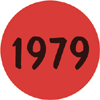
![]() f you were a kid in 1979, you may remember how the Snoopy Sno-Cone Machine first won your heart with its now-classic commercial. Who could forget those ever-cheerful girls who chirped “It’s yummy, Snoopy”? And those girls made it look so easy.
f you were a kid in 1979, you may remember how the Snoopy Sno-Cone Machine first won your heart with its now-classic commercial. Who could forget those ever-cheerful girls who chirped “It’s yummy, Snoopy”? And those girls made it look so easy.
As with many kitchen play sets, the fun was more in the making than the eating. The plastic unit was shaped like Snoopy’s dog house—complete with Snoopy, as per usual, on the roof. Kids dropped cubes of ice into the top and turned the crank on the back, and shavings fell into a cup, using the Snoopy figure on top of a plunger to push the ice into the grinder. The ice could be flavored with Kool-Aid, syrup, or any other kind of sugary goodness.
As impressive as the sno-cone machine looked in the TV commercials, it wasn’t the most functional appliance. It took lots of ice to even partially fill the cup, and the ice shavings had a tendency to melt before a convincing sno-cone could be made. None of that mattered to kids, however; as the fun was in the shredding, not getting a professional or even edible result.
Once the commercial was taken off the air, the toy faded, though every few years different companies would try to revive it, trading mostly on the nostalgia factor and targeting those Gen Xers who had wanted a Snoopy Sno Cone Machine and not gotten it, and were keen to rectify that terrible injustice by buying one for their own kids.
In 2012, Cra-Z-Art launched an almost exact replica of the original, down to the fact that it was better at making a delicious slushy mess than recognizable sno-cones.